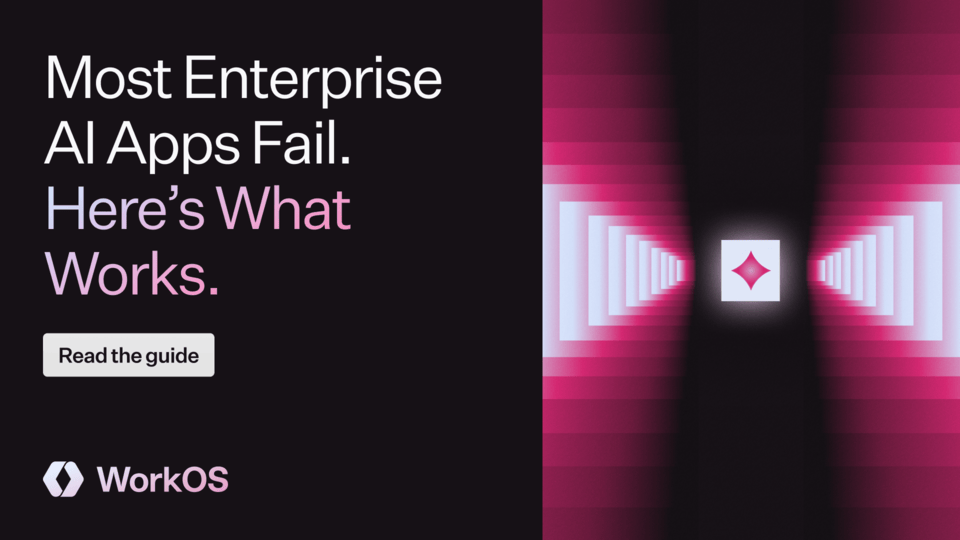Welcome, Developers! 👋
This week: why JSON imports shouldn't replace fetch(), CSS inherit() simplifies design systems, essential HTML tags that prevent browser quirks, the IEEE 754 story behind NaN's strange behavior, and how senior engineers can leverage AI beyond basic code generation. | | |
| |
|

| Most Enterprise AI Apps Fail. Here’s What Works. Most AI apps never make it past the prototype phase because of compliance gaps, security issues, and weak infrastructure. This guide outlines how successful teams move quickly from idea to launch.
WorkOS gives you the APIs and enterprise features like SSO, SCIM, RBAC, and Audit Logs so your team can go from prototype to production fast. |
| Read the guide | |
| |
🔖 The Reading Room
Articles we have hand-picked for you: | | |
Importing vs. Fetching JSON
JavaScript's JSON module imports are now implemented across all browser engines, but they shouldn't replace fetch() in most cases. While the feature allows direct JSON importing with type assertions, it comes with significant drawbacks including poor error handling, permanent caching, and memory leak risks. Fetch() remains the better choice for dynamic data and third-party resources.
By Jake Archibald → | |
How CSS inherit() Could Simplify Design Systems
The new CSS inherit() function allows child elements to explicitly read and derive values from parent custom properties, eliminating token duplication in design systems. Instead of creating countless custom properties, components can now adapt spacing, density, and colors based on their container context with cleaner, more predictable code.
By Stuart Robson → | |
Don't Forget These Tags to Make HTML Work Like You Expect
Forgetting basic HTML tags causes preventable issues like broken smart quotes, emoji display problems, and zoomed-out mobile views. Four simple declarations (DOCTYPE, lang attribute, charset, and viewport) prevent browsers from switching to quirks mode and ensure proper text interpretation. By Jim Nielsen → | |
Why NaN !== NaN in JavaScript (and the IEEE 754 story behind it)
NaN solves a fundamental programming problem: how to handle invalid math operations without crashing. JavaScript's quirky NaN behavior isn't a language bug but a hardware feature. When you write NaN !== NaN in JavaScript, you're actually triggering assembly code that checks processor flags to detect invalid mathematical operations.
By Piotr Zarycki → | |
How Senior Engineers Can Use AI for Real Impact
This article goes through how engineers can use it beyond boilerplate code generation. It talks about using AI as a thought partner, knowing when not to use it (security-critical code), and maintaining human judgment. By Nishant Ghan → | | |
| |
| |
🔗 The Link Lounge Unordered finds from around the web:
Find something cool? You can send us links to feature here via email. | | | | | |
🧰 The Toolbox
Tools and products we're excited about today: | | | |
React Grab
React Grab lets you click any element in your React app while holding ⌘C to instantly share its code with AI coding assistants like Cursor or Claude. Just add one script tag. Works in development mode with Next.js, Vite, and other frameworks. Learn more → | |
Ky
Ky is a tiny HTTP client built on the Fetch API for browsers, Node.js, Bun, and Deno. It simplifies requests with method shortcuts, automatic retries, JSON support, timeout handling, customizable hooks, and better error handling. Zero dependencies. Learn more → | |
vite-plugin-use-golang
Vite plugin that lets you write Go code in JavaScript files with "use golang" directive. Compiles to WebAssembly via TinyGo at build time. Functions set on js.Global() become available on window. Great for image processing, cryptography, or leveraging Go's standard library in browsers.
Learn more → | |
Vitest 4.0 Vitest 4.0 is released with stable Browser Mode (visual regression testing, Playwright traces), improved debugging, type-aware hooks, reporter updates, and advanced API methods.
Learn more → | | | |
Most Enterprise AI Apps Fail. Here’s What Works.
Most AI apps never make it past the prototype phase because of compliance gaps, security issues, and weak infrastructure. This guide outlines how successful teams move quickly from idea to launch.
WorkOS gives you the APIs and enterprise features like SSO, SCIM, RBAC, and Audit Logs so your team can go from prototype to production fast.
Read the guide → |
| | |
🎤 Your Voice Your feedback shapes what comes next! We read every email, so simply hit reply and tell us what's on your mind. |
| | | | |
|
|